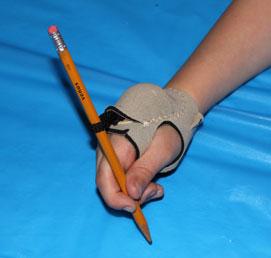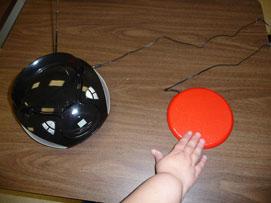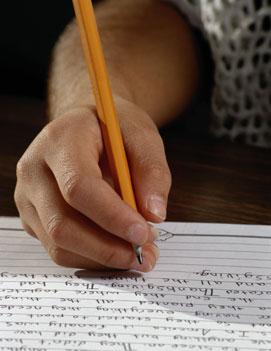What it is
An area of student need, involving fine (small) physical motor skills of the fingers and hands.
Teaching Strategies

Instructional
• Implement school-based strategies provided by a Physical or Occupational Therapist.
• Use assistive devices, like pencil grips and various sizes of writing instruments.
• Create opportunities for paired writing activities with peers who have strong fine motor skills.
• Use assistive technology and computers.
• Provide copies of notes.
• Chunk written work into parts.
• Use larger-lined paper or paper with raised lines.
• Provide practice in making particular letters of difficulty.
• Teach cursive writing if printing is especially problematic.
• Teach keyboarding skills and/or the use of speech to text software.
• Permit the use of a computer for drafts, especially first drafts, so that future drafts require less fatigue.
• Provide a physical mouse instead of a touch pad on lap tops (larger/specialized mouses are available).
• Develop and teach alternative programming expectations with respect to the student’s fine motor development.
• Reward student efforts.
Less...
More...

Environmental
• Use preferential seating to use assistive technology (near an outlet).
• Provide a larger or slanted work surface.
• Use stress balls to massage tired hands and to strengthen hand.
• Substitute key lock for combination lock.
• Monitor the student for safety when working with science or art materials, especially if the student is unfamiliar with the specific materials used.

Assessment
• Provide extra time.
• Give oral tests/scribe answers for the student.
• Give tests with a variety of formats to reduce the amount of writing required (true/false, multiple choice).
• Use assistive devices (computer, assistive programs, specific paper/writing tools).
• Provide choice in assignments, including some with less writing demands (Power Point presentations, for example)
Resources











